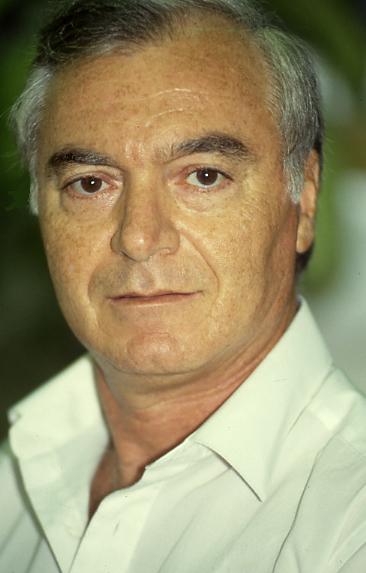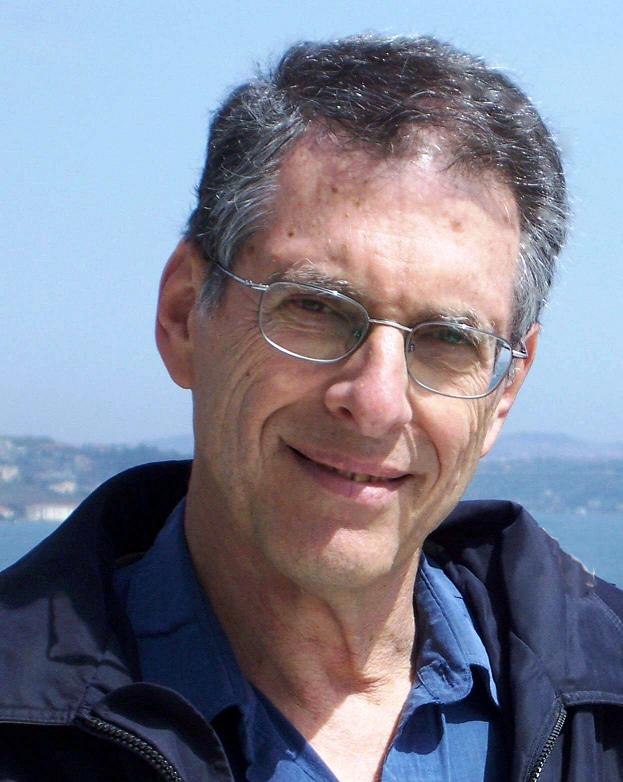The new members, leading scientists from the research universities in Israel, were elected at the Academy's general meeting based on the recommendation of the Academy's members from its two divisions. The members of the National Academy of Sciences number 99 researchers, of which 54 are from the natural sciences and 45 from the humanities and social sciences

Prof. Oded Abramski, Prof. Yosef Levia and Prof. Avraham Nitzan are the selected scientists joining as new members of the Israeli National Academy, in the traditional ceremony of awarding the Academy member certificates that will take place tomorrow, the third candle eve of Hanukkah 15, Tuesday, December 2009, XNUMX in Jerusalem .
The Academy, the highest body in the scientific community, was founded by law in 1961 with the aim of bringing together the best of Israel's science personalities in order to foster and promote scientific activity in the country and to advise the Israeli government on actions related to research and scientific planning of national importance. It is currently celebrating its 50th anniversary. .
The new members, leading scientists from the research universities in Israel, were elected at the Academy's general meeting based on the recommendation of the Academy's members from its two divisions. The members of the National Academy of Sciences number 99 researchers, of which 54 are from the natural sciences and 45 from the humanities and social sciences.
Prof. Oded Abramski
Born in Jerusalem (1940). Has a Doctor of Medicine (MD) and a Doctor of Philosophy (PhD) degree from the Hebrew University.
Prof. Abramsky is an expert in neurology and is considered one of the researchers who led and promoted the field of neuroimmunology, which links the immune system and the nervous system. Today it is clear that there is a bilateral relationship between the systems and they even balance each other. The research in the field examines, on the one hand, the effect of the nervous system on the immune system and, on the other hand, shows how changes in the immune system cause disorders in brain functions.
Prof. Abramsky promoted, together with his colleagues, the research and treatment of autoimmune diseases of the nervous system. An example of this is the disease of myasthenia gravis (MG) which, together with Prof. Sarah Fox, showed that the paralysis in this disease results from an autoimmune disorder that damages the function of the connection between the nerve and the muscle. The discovery led to the fact that today the disease can be successfully treated with various immunological treatments. Another example is a study on the effects of pregnancy on autoimmune diseases such as multiple sclerosis and arthritis in which Abramsky and Prof. Thelma Brenner discovered a clinical improvement of these diseases in the second half of pregnancy and insisted on the importance of the immunological pregnancy protein alpha fetoprotein (AFP). This substance is currently being tested as a treatment for autoimmune diseases.
In his latest research, Abramsky deals with immunological aspects of neurodegenerative brain diseases: demonstration of antibodies to brain antigens (TAU, amyloid, synuclein) in patients with neurodegenerative diseases (Alzheimer's, FTS, DLBD, Parkinson's) and an immunological model in laboratory animals. This experimental model is an inspiration for the treatment of degenerative brain diseases by immunological means in humans.
Among his positions, Prof. Abramsky served as the director of the neurology department at Hadassah University Hospital; Dean of the Faculty of Medicine at the Hebrew University of Hadassah; the chief scientist of the Ministry of Health; Chairman of the Ministry of Health's committee to register medical preparations in Israel; and Chairman of the Board of Governors of the Israel-USA Binational Science Foundation.
Abramsky currently serves as the chairman of the National Council for Research and Civil Development in Israel; Director of the Agnes Gings Center for Humane Neurogenetics at Hadassah Hospital and Honorary President of the Israeli Society for Neuroimmunology. He published four books and about 320 scientific articles.
Prof. Abramsky is an honorary member of the American Neurological Society (ANA); Foreign member of the Institute of Medicine (IOM) of the National Academy of Sciences in the USA; Honorary Fellow of the British Royal College of Physicians (FRCP).
As part of his military service in the reserves, he was a divisional medical officer with the rank of Lt. Col. in the First Lebanon War; And later deputy to the head of research and development at Mafa'at and commander of the "Adam in the Battle" project at the rank of colonel.
Prof. Yossi Levia

Prof. Levia is among the first rank of scientists in the world dealing with ecology and environmental issues. His scientific interests include: ecology and evolution, biodiversity, environmental conservation, theoretical ecology, coral reproduction strategies, natural materials from marine sources with biological activity, the effect of sea pollution (crude oil, urban sewage, aquaculture) and global warming problems on reef societies The corals. Prof. Loya dedicated his academic career to the study of coral reefs in Israel and around the world.
Prof. Levia has made a significant contribution to the development of ecological research, environmental research and environmental protection in Israel. So far, several generations of research students (23 PhD students and over 40 MSc students) have graduated under his guidance, who today form a significant part of the academic backbone in most universities, research institutions and environmental organizations in Israel.
His research was supported by over 40 research grants from competitive research funds in Israel and around the world. He has published his scientific works in more than 210 articles in first-class newspapers in his fields of expertise as well as in general newspapers, including Science and Nature, and presented his research in about 80 international conferences, many of them as invited plenary lectures. His publications on the biological diversity of coral reef societies have become classic "milestones" in ecological literature and serve as a comparative model for many research works in this field throughout the world.
Prof. Loya is the recipient of the most prestigious Darwin Medal in his field of expertise, which was awarded to him in 2000, in recognition of the "lifetime work of a researcher, whose scientific achievements and contribution to the field are among the most outstanding in the world". This recognition is mainly due to his achievements in the development of field work methods for the quantitative documentation of changes that occur in the structure of coral societies, following natural or man-made environmental changes, and the development of statistical methods for data analysis. These methods are today the ecological "Tanach" which has been adopted by many researchers around the world.
In 1995, he founded and for about five years headed the Porter Center for Environmental Studies at Tel Aviv University, which developed into the School of Environmental Studies. In 1996, he was entrusted by the Tel Aviv University Senate with the Robert Raynor Chair for Environmental Conservation Research. He served as a visiting professor at several major research centers in the world.
Prof. Loya currently serves as the chairman of the international scientific committee of the Australian Center of Excellence for Coral Reef Research on behalf of the Australian Ministry of Science. He is also a member of international committees and working groups on environmental conservation, biological diversity and global problems of climate change on companies and people.
Prof. Avraham Nitzan

Prof. Nitzan is one of the most senior researchers in the world in the field of physical chemistry. His research focuses on various theoretical aspects of chemical dynamics - a branch of chemistry that describes the dynamics of chemical reactions and physical and chemical processes related to them, with the aim of understanding and observing the development of chemical processes from the microscopic properties of individual atoms and molecules, and determining the trajectory, speed, efficiency and utilization of processes such His contributions are particularly important for understanding chemical processes that occur in condensed phases and at interphase surfaces, in light-matter interaction phenomena, and in electron and ion transfer phenomena. Understanding these processes is at the foundation of the new field of molecular electronics, one of the important research areas of nanotechnology.
In these fields he published nearly 300 articles and a comprehensive book: "Chemical Dynamics in Condensed Phases" published by Oxford University Press, and also registered a patent. and gave invited lectures at over one hundred and forty conferences.
In 1992, he was entrusted by the university senate with the chair of chemical dynamics named after Iser and Rebecca Kodesh. He won the Kolthoff Award (1995), the Humboldt Award (1995), the Israel Chemical Society Award (2002) and the Manchot Award (2004), and was elected a Fellow of the American Physical Society, the APS, and the American Association for the Advancement of Science, the AAAS, and a member of the American Academy of Arts and to the sciences.

4 תגובות
The word Bhirim exists in Hebrew, this is not an error, I also thought so at first.
They were elected to the Academy by the other members and they are of course also senior because only the most senior scientists from a scientific point of view and not necessarily from an administrative point of view - are members of the Academy (this is how it is in every country).
Seniors and not elected in the second row
"(23 doctoral students and over 40 master's students) who are currently a significant part of the academic backbone in most universities, research institutions and environmental organizations in Israel"
Sounds normal?
Phish.. this page contains a lot of respect..
And now for the mistakes- 1. My father, on the main page, the picture of the professor is cut off (a small square).
2. A common mistake that deserves correction: "the fiftieth anniversary". It is nothing but a jubilee, because one jubilee is equal to fifty years.